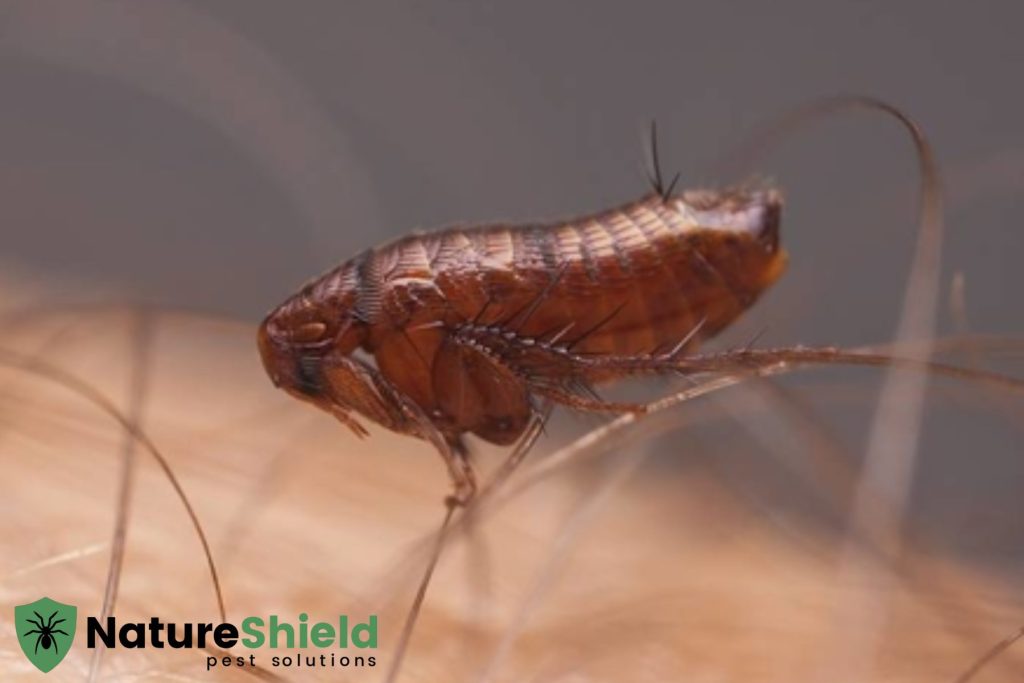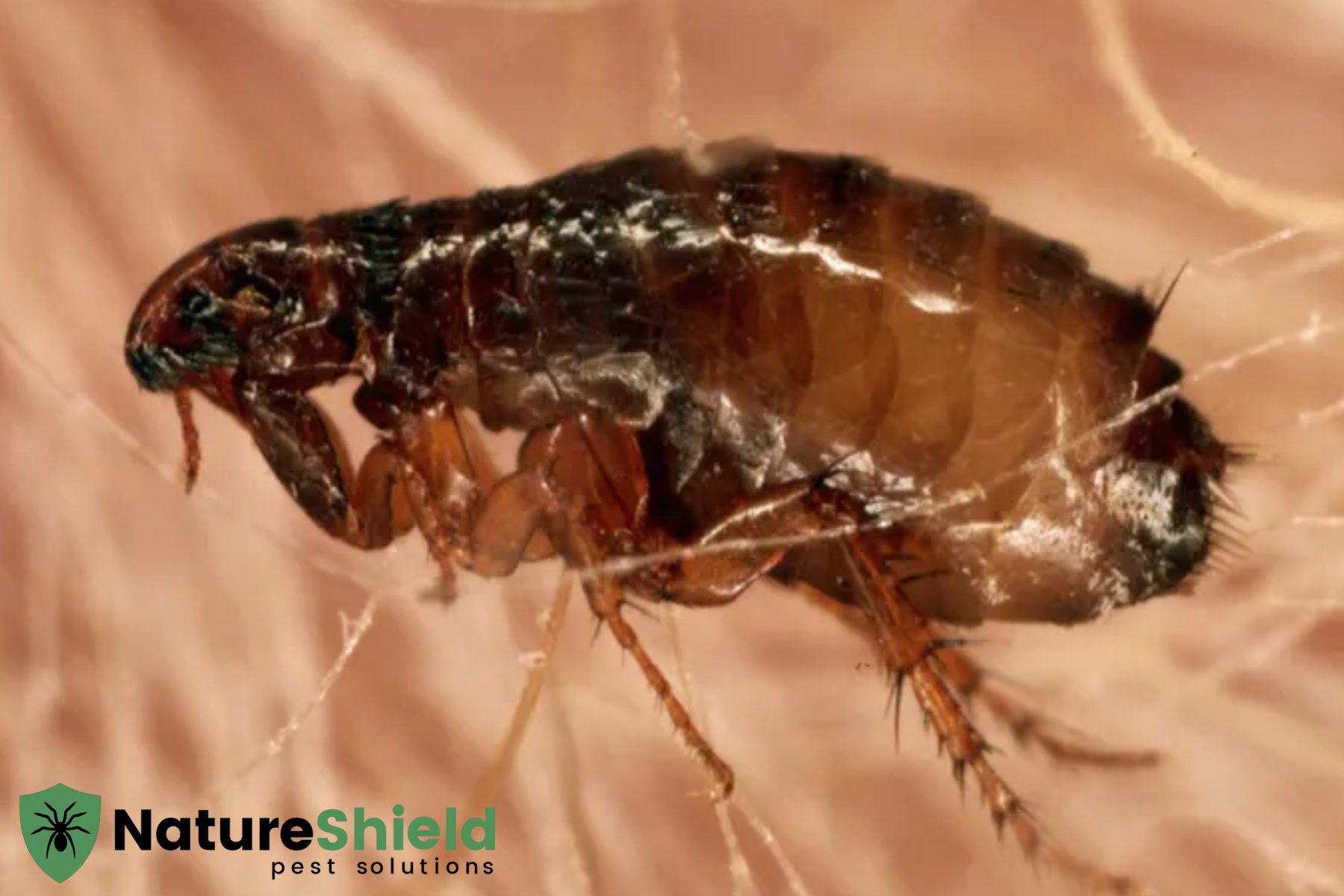Silent Destroyers: Can Fleas Fly? Here's What You Need to Know
Fleas are tiny, but they can be mighty when it comes to causing problems for both pets and humans. These pests are known for their ability to spread diseases, irritate animals, and multiply quickly. But one question that often comes up when it comes to fleas is: Can fleas fly?
If you’ve ever noticed a flea hopping around, you may have assumed they can fly, but that’s not quite the case. Understanding flea behavior and their capabilities is important for managing and preventing infestations. In this article, we’ll clear up the common misconception about fleas flying and explore everything you need to know about these silent destroyers.
Can Fleas Fly?
The short answer to the question “Can fleas fly?” is no, fleas cannot fly. Fleas are wingless insects, and they do not possess the anatomy required for flight. Unlike flies or mosquitoes, fleas have no wings and cannot take to the air. However, they are incredible jumpers. Fleas have strong, powerful legs that allow them to leap long distances up to 200 times their body length! This impressive jumping ability can make it seem like fleas are flying when they’re simply hopping from one host to another, but in reality, they’re not airborne.
Fleas rely on their ability to jump for mobility rather than flight. Their back legs are adapted for this purpose, providing them with the ability to cover large distances quickly. This makes fleas incredibly efficient at finding new hosts to latch onto, whether it’s a pet, a human, or another animal.
If you want to prevent these jumping pests from taking over your home, understanding their habits and finding a solution for flea control near me is essential.
Do Fleas Have Wings?
Do fleas have wings? Fleas do not have wings, despite being mistaken for flying insects due to their jumping abilities. Their lack of wings is a key distinction between them and other insects that might seem similar at first glance, such as mosquitoes or flies. Fleas are classified as wingless insects in the order Siphonaptera, which means they lack the necessary body parts for flight.
Instead of wings, fleas have strong, muscular legs that are perfect for jumping. Their long back legs are particularly adapted for leaping, making them highly efficient at traveling distances. When fleas jump, they can cover a significant distance in a very short amount of time, which helps them find hosts to feed on and ensure their survival. They can leap up to 7 inches vertically and up to 13 inches horizontally, making it possible for them to travel from one pet to another or even to a human, all without the need for wings.
It’s fascinating to note that despite being wingless, fleas can still create problems for homeowners, pets, and animals alike. Their ability to reproduce rapidly and jump long distances makes them a challenging pest to control once they’ve established themselves in your home.
For more detailed information on flea behavior, check out our article on can fleas fly.
The Life Cycle of a Flea
Understanding the life cycle of fleas is crucial for effective flea control. Fleas go through four life stages: egg, larva, pupa, and adult.
- Eggs: Fleas lay their eggs on the host, such as a pet. However, flea eggs are not sticky, so they often fall off the host and land in areas like carpets, bedding, or furniture. In these places, they can hatch into larvae.
- Larvae: The flea larvae are tiny, worm-like creatures that feed on organic material, including flea feces. They avoid light and move deep into cracks and crevices, making it difficult to spot them.
- Pupae: After feeding, flea larvae spin protective cocoons around themselves to enter the pupal stage. Fleas can remain in the pupal stage for several weeks, waiting for the right conditions to hatch. The adult flea will emerge when it detects vibrations, such as from a pet or human moving nearby.
- Adults: Once the flea has fully developed into an adult, it immediately seeks out a host to feed on. Adult fleas can live for several months, continuing to feed and reproduce, creating a cycle that can lead to a persistent flea infestation.
Fleas reproduce at an alarming rate, with females laying up to 50 eggs a day. If left unchecked, an initial flea problem can quickly turn into a major infestation.
Flea Infestations: Signs to Watch For
Fleas are sneaky pests, often hiding in the most difficult-to-reach areas of your home, including carpets, upholstery, and pet bedding. As a homeowner, it’s important to be aware of the signs of a flea infestation to address it quickly.
1. Itchy Pets
Pets, especially dogs and cats, are the primary targets for fleas. If your pet starts itching, biting, or licking excessively, fleas could be the cause. Fleas tend to congregate around the neck, tail, and belly areas of pets, so check for signs of flea bites or flea dirt (tiny black specks that are actually flea feces).
2. Flea Bites on Humans
Although fleas prefer animals as hosts, they will bite humans if they can’t find an animal host. Flea bites typically appear as small, red, itchy bumps, often found around the ankles and lower legs. These bites can become inflamed and painful if left untreated.
3. Flea Dirt
As mentioned earlier, flea feces, also known as flea dirt, looks like tiny black specks. These can be found on your pet’s fur, bedding, or carpets. If you see these specks, they are a clear indicator that fleas are present in your home.
4. Seeing Fleas Jumping Around
If you see fleas jumping around your home, especially in areas where your pet spends a lot of time, it’s a sign that you have an infestation. Fleas are known for their remarkable ability to jump long distances, so even a small number of fleas can quickly spread throughout your home.
How to Prevent Fleas in Your Home
Preventing a flea infestation involves a combination of keeping your pets protected and regularly cleaning your home. Here are some steps to take to keep fleas at bay:
- Treat Your Pets: Use flea prevention products like topical treatments, collars, or oral medications to protect your pets. Regularly check your pets for fleas, especially during the warmer months when fleas are more active.
- Vacuum Regularly: Flea eggs, larvae, and adult fleas can hide in carpets, rugs, and upholstery. Regular vacuuming can help remove flea eggs and larvae before they have a chance to hatch and infest your home.
- Wash Pet Bedding and Fabrics: Wash your pet’s bedding, toys, and any fabric items your pet regularly comes into contact with in hot water to kill fleas and their eggs.
- Seal Cracks and Crevices: Fleas can hide in the smallest cracks and crevices. Ensure your home is sealed properly to prevent fleas from entering through gaps around windows, doors, and baseboards.
- Professional Flea Control: If you’ve already noticed signs of fleas or an infestation, reaching out for flea control near me can help address the issue before it escalates. Professional Columbia MO pest control can provide treatment for both the pets and the environment to eliminate fleas completely.
For more information about effective flea control, check out our pest control Columbia MO services.

About Nature Shield Pest Solutions
At Nature Shield Pest Solutions, we provide comprehensive pest control services, including flea control, to help protect your home and family from pests. Serving Columbia, MO, and surrounding areas, our team is dedicated to using safe and effective pest control solutions tailored to your needs. Whether you’re dealing with fleas, ants, or other pests, we offer expert advice and treatment to ensure a pest-free home. Visit our website to learn more about our services or to schedule a consultation today!


